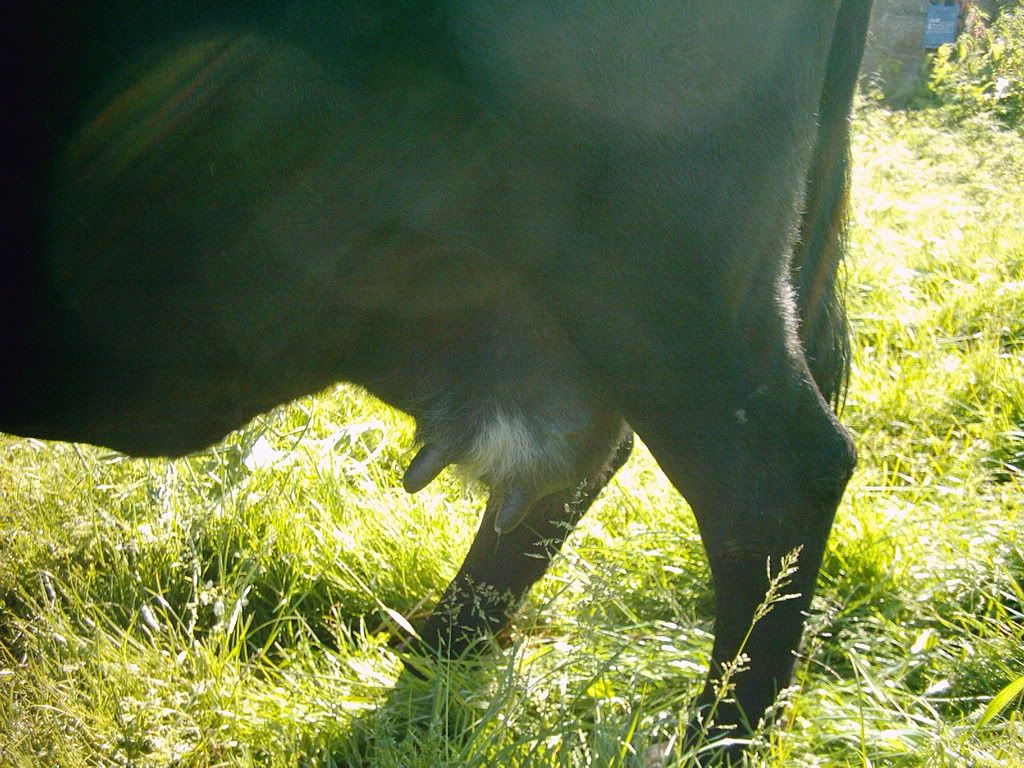Breeding Bulls
-
Rutherford
- Posts: 229
- Joined: Sat Dec 04, 2004 9:08 am
Lewis if you want to know what a good udder should look like, google up Ayshire Cattle Society and take a look at some of the cows illustrated in their ‘for sale’. All cattle folks will admit that the breed is renowned for good udders, and there are some brilliant examples on show. I am not trying to sell you the breed, I certainly wouldn’t swap them for my Dexters, but the udders are superb. It will give you some idea of what to aim for. A big udder but not pendulous, with a neat teat on each quarter not close together, and a flat sole. Difficult to show a good Dexter one, because our cattle have much more protection from the weather and the colour isn’t helpful.
Beryl (Woodmagic)
Beryl (Woodmagic)
Here are a few pics of Dexter udders, hope it is some help.
The first three are all of the same heifer, sorry the first one is a bit messy, she was just starting to calve. The next ones are when she has been calved over 3 months.
The dun udder is of an older dry cow, she is 12 years old.
Hope someone can comment on these please?
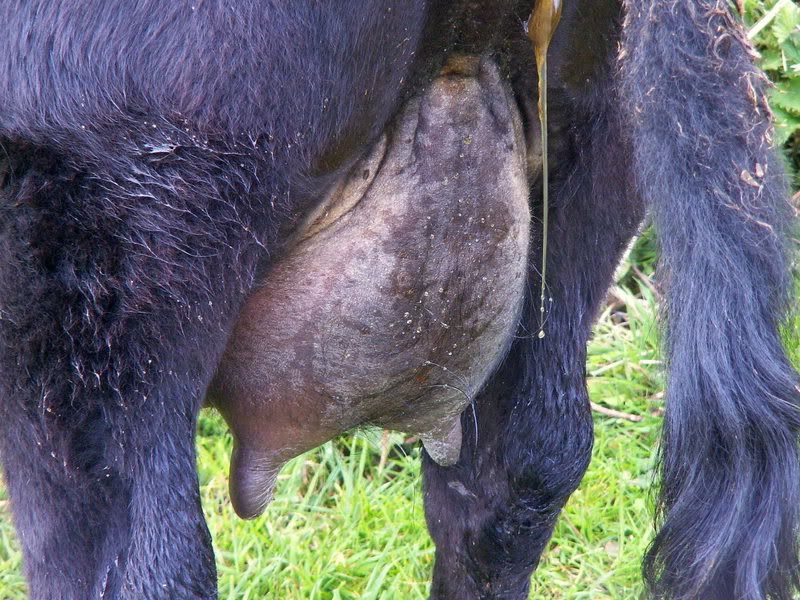


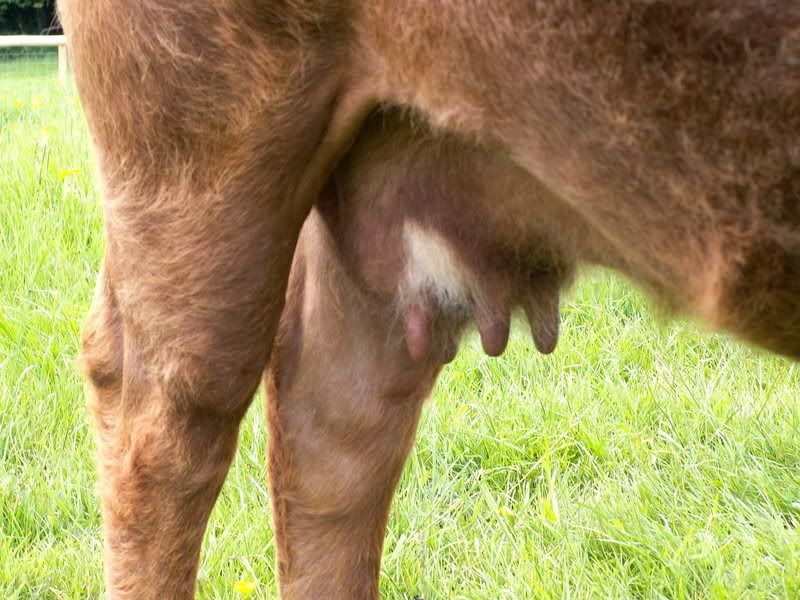
Stephanie
The first three are all of the same heifer, sorry the first one is a bit messy, she was just starting to calve. The next ones are when she has been calved over 3 months.
The dun udder is of an older dry cow, she is 12 years old.
Hope someone can comment on these please?




Stephanie
Stephanie Powell
Duffryn Dexters 32824
Abergavenny
https://www.facebook.com/Duffryn-Dexter ... 609196773/
Duffryn Dexters 32824
Abergavenny
https://www.facebook.com/Duffryn-Dexter ... 609196773/
Its OK guys I won't find out where you live and beat your door down, if you are less than kind about my cows appendages,which I am sure are not perfect!
I shall start this off myself then.
There are some warts on the heifers teats. They are not attractive and would certainly affect her if she were a show cow but unless they are huge and causing obvious problems I believe they are best left and usually drop off in time. Can be a bind if you are milking them though.
Some udder comments would be useful! :laugh: :laugh:
Stephanie
I shall start this off myself then.
There are some warts on the heifers teats. They are not attractive and would certainly affect her if she were a show cow but unless they are huge and causing obvious problems I believe they are best left and usually drop off in time. Can be a bind if you are milking them though.
Some udder comments would be useful! :laugh: :laugh:
Stephanie
Stephanie Powell
Duffryn Dexters 32824
Abergavenny
https://www.facebook.com/Duffryn-Dexter ... 609196773/
Duffryn Dexters 32824
Abergavenny
https://www.facebook.com/Duffryn-Dexter ... 609196773/
-
Duncan MacIntyre
- Posts: 2372
- Joined: Tue Mar 30, 2004 12:38 am
- Location: Isle of Bute, Scotland, UK
This is a bit of an off the cuff response, rather than a thesis on udders.
The good things to look for are attachment, symetry, teat spacing and teat size. As Beryl says the Ayrshire traditionaly has been a breed sporting ideal udders for dairy animals. There should be a teat of good size but not "milk bottle" dimensions pointing straight down at each corner. The quarters should be symetrical, and one which has suffered a severe mastitis upsets this. Of course all these things are easier to spot in a dairy cow being milked rather than a suckled cow. Calves often take disproportionatly from the teats and the udder becomes very distorted, difficult to say it is anything other than a set of bagpipes. ( Sorry Scottish background showing there).
The udder should also be well attached to the body, both by the medial ligament and at the front and behind. Good attatchment is the key to the good udders of the Ayrshire, compare to the old British Fresian. For twenty years or more I have been saying to my dairy farmer clients that Ayrshire udders were becoming more like Fresians and Fresians more like Ayrshires. With the latter I think the Holstein has had a good influence.
I missed out number of teats. Obviously there shoud be only 4. Supernumerary teats can be a pest. They are also very heritable so this is why our bulls should only have 4 rudimentary teats at the neck of the scrotum.
Growth of feet is also inherited. Many years ago I thought this, then decided that it was due to excess feeding. Now, having gone from milking my dexters to suckling, and reducing feed from heavy use of concentrates to give high milk yields, I still see the long feet in some lines. The shallow heels tend to go with the long toes, but not always. Again breeding is the key, and you cannot produce good points from two parents with homozgous genes for the bad points. The key is to identify the faults in your herd, and look for breeding partners to counter these points.
Duncan
The good things to look for are attachment, symetry, teat spacing and teat size. As Beryl says the Ayrshire traditionaly has been a breed sporting ideal udders for dairy animals. There should be a teat of good size but not "milk bottle" dimensions pointing straight down at each corner. The quarters should be symetrical, and one which has suffered a severe mastitis upsets this. Of course all these things are easier to spot in a dairy cow being milked rather than a suckled cow. Calves often take disproportionatly from the teats and the udder becomes very distorted, difficult to say it is anything other than a set of bagpipes. ( Sorry Scottish background showing there).
The udder should also be well attached to the body, both by the medial ligament and at the front and behind. Good attatchment is the key to the good udders of the Ayrshire, compare to the old British Fresian. For twenty years or more I have been saying to my dairy farmer clients that Ayrshire udders were becoming more like Fresians and Fresians more like Ayrshires. With the latter I think the Holstein has had a good influence.
I missed out number of teats. Obviously there shoud be only 4. Supernumerary teats can be a pest. They are also very heritable so this is why our bulls should only have 4 rudimentary teats at the neck of the scrotum.
Growth of feet is also inherited. Many years ago I thought this, then decided that it was due to excess feeding. Now, having gone from milking my dexters to suckling, and reducing feed from heavy use of concentrates to give high milk yields, I still see the long feet in some lines. The shallow heels tend to go with the long toes, but not always. Again breeding is the key, and you cannot produce good points from two parents with homozgous genes for the bad points. The key is to identify the faults in your herd, and look for breeding partners to counter these points.
Duncan
Duncan MacIntyre
Burnside Dexters 00316
Burnside
Ascog
Isle of Bute
Burnside Dexters 00316
Burnside
Ascog
Isle of Bute
-
Mark Bowles
- Site Admin
- Posts: 1290
- Joined: Mon Mar 29, 2004 6:03 pm
- Location: Leicestershire England
Saffy, i think your cows have very acceptable udders. I tend to think the Dexter breed as a whole is stuggling to acheive good udders, there are very few around, and incorporate that with other faults you can get ( bad topline, poor walking, bad feet etc) its not easy to get it right.
I personally have a wild dream of breeding the perfect Dexter, the only floor in the plan is having enough years left to do it, as in, you would probably need decades.
In fact can anyone name the best dexter they have ever seen.
That probably needs a seperate topic.
Anyway Saffy, pick your bulls with care so you don't loose the udders you have!
I personally have a wild dream of breeding the perfect Dexter, the only floor in the plan is having enough years left to do it, as in, you would probably need decades.
In fact can anyone name the best dexter they have ever seen.
That probably needs a seperate topic.
Anyway Saffy, pick your bulls with care so you don't loose the udders you have!
Mark Bowles
Linford Dexters
Webmaster
Linford Dexters
Webmaster
- Broomcroft
- Posts: 3005
- Joined: Wed Sep 06, 2006 4:42 am
- Location: Shropshire, England
- Contact:
-
Rutherford
- Posts: 229
- Joined: Sat Dec 04, 2004 9:08 am
Thank you Mark I shall try to pick the right bulls in the future - not an easy task!
In case anyone would like to know the udders in the pics belong to:-
A black Woodmagic heifer, her sire is:- Woodmagic Rhinoceros
And the dun is a 12 year old Nutlin cow , her sire is Woodmagic Roebuck
Stephanie
In case anyone would like to know the udders in the pics belong to:-
A black Woodmagic heifer, her sire is:- Woodmagic Rhinoceros
And the dun is a 12 year old Nutlin cow , her sire is Woodmagic Roebuck
Stephanie
Stephanie Powell
Duffryn Dexters 32824
Abergavenny
https://www.facebook.com/Duffryn-Dexter ... 609196773/
Duffryn Dexters 32824
Abergavenny
https://www.facebook.com/Duffryn-Dexter ... 609196773/
-
AlisonKirk
- Posts: 122
- Joined: Fri Oct 12, 2007 1:16 pm
Boram Apollo is producing lovely heifers with identical superb udders to that of his dam, Moonshine Amanda (Saltaire bloodlines). Apollo's male calves can be easily identified from the way they walk away from us - this has come down from his dam and shows how a bull will pass on the merits (or indeed not so good points) from his own parents.
Redhill - Dulcie is certainly a credit to you both.
Alison Kirk
Boram Dexters
Redhill - Dulcie is certainly a credit to you both.
Alison Kirk
Boram Dexters
Here are a few more udders to look at, they were photographed a week ago at Woodmagic. Unfortunately a combination of mostly dry cows, an almost fatally dropped camera, a very fast moving fresh calver and a very slow moving camera woman have not helped the quality!!!
The first two young dry cows.
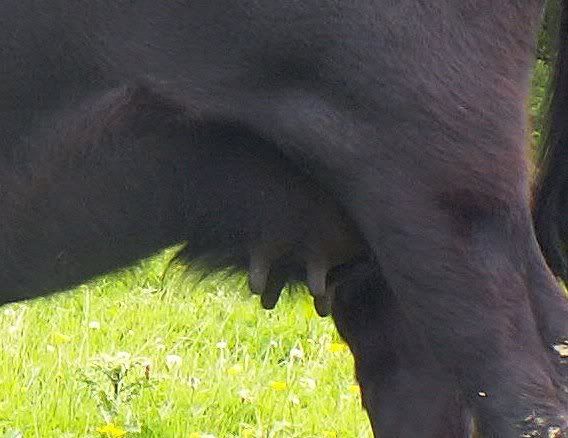

The one below is a freshly calved cow that has calved for the second time.
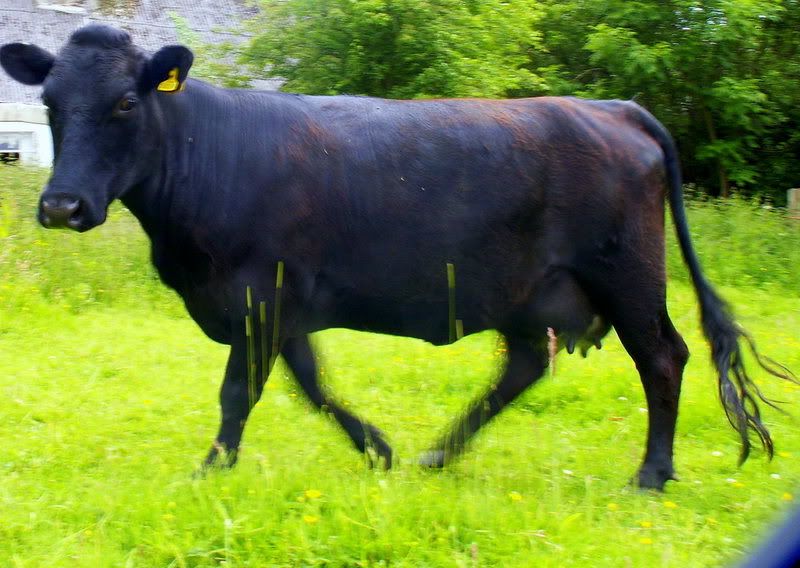
The two cows pictured below are quite mature shall we say, I believe the dun is 13 this year, I am not sure how old the other is.
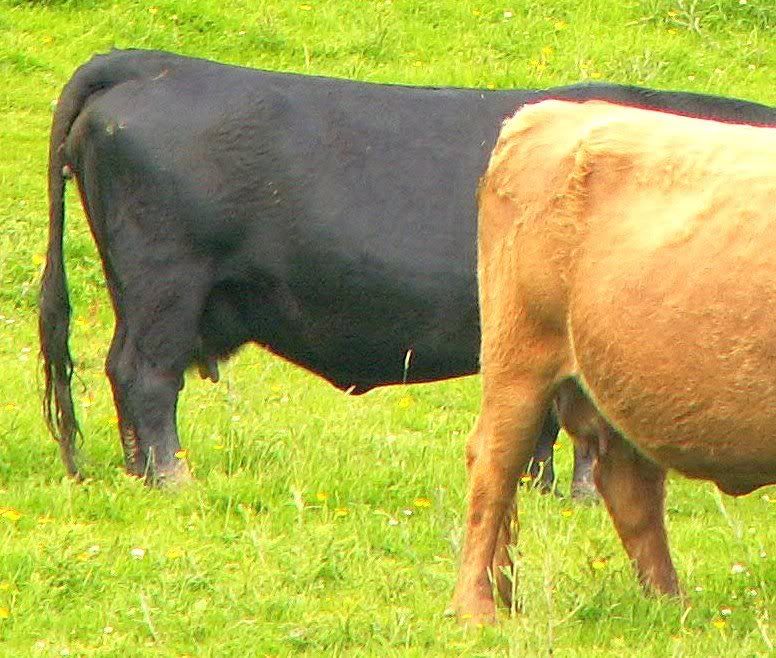
Stephanie
The first two young dry cows.


The one below is a freshly calved cow that has calved for the second time.

The two cows pictured below are quite mature shall we say, I believe the dun is 13 this year, I am not sure how old the other is.

Stephanie
Stephanie Powell
Duffryn Dexters 32824
Abergavenny
https://www.facebook.com/Duffryn-Dexter ... 609196773/
Duffryn Dexters 32824
Abergavenny
https://www.facebook.com/Duffryn-Dexter ... 609196773/
We keep two bulls together. The two older bulls (7 and 8 years of age) have 2 acres to live in during most of the year, when their services aren't needed. They live together in and uneasy truce.
Our two younger bulls (18 months and 9 months) never fought at all when they were put together. The 18 month old, was so desperate for company that he welcomed the younger bull wholeheartedly. Then again, he is a lovely natured bull and the younger bull is settling in very nicely as well. I'm hoping that they will get along together much better than the two older bulls who always fight when they are put back together at the end of each breeding season. We use three electric wires along the fence which shares a common boundary with the paddock that other stock is put in. At the moment, it is the two young bulls.
When we only had one bull, we tried to always keep at least one steer in with him to keep him company. He hated being alone and keeping a steer with him, kept him in a happy state of mind.
If I were you Lewis, I'd get the second bull calf steered. It would make life a lot simpler. During mating season, the steer can stay with the heifers while the bull is with the breeding herd, or until they reach an age when they are old enough to be mated. Calves settle down a lot quicker after being weaned, if they have an older animal to be herd leader. A steer is a handy animal to have around. Bulls don't see them as competition, so tend to get along with them better than another bull. A content young bull is more likely to stay in his paddock, than a young bull by himself.
Our two younger bulls (18 months and 9 months) never fought at all when they were put together. The 18 month old, was so desperate for company that he welcomed the younger bull wholeheartedly. Then again, he is a lovely natured bull and the younger bull is settling in very nicely as well. I'm hoping that they will get along together much better than the two older bulls who always fight when they are put back together at the end of each breeding season. We use three electric wires along the fence which shares a common boundary with the paddock that other stock is put in. At the moment, it is the two young bulls.
When we only had one bull, we tried to always keep at least one steer in with him to keep him company. He hated being alone and keeping a steer with him, kept him in a happy state of mind.
If I were you Lewis, I'd get the second bull calf steered. It would make life a lot simpler. During mating season, the steer can stay with the heifers while the bull is with the breeding herd, or until they reach an age when they are old enough to be mated. Calves settle down a lot quicker after being weaned, if they have an older animal to be herd leader. A steer is a handy animal to have around. Bulls don't see them as competition, so tend to get along with them better than another bull. A content young bull is more likely to stay in his paddock, than a young bull by himself.
Inger
NZ
NZ
